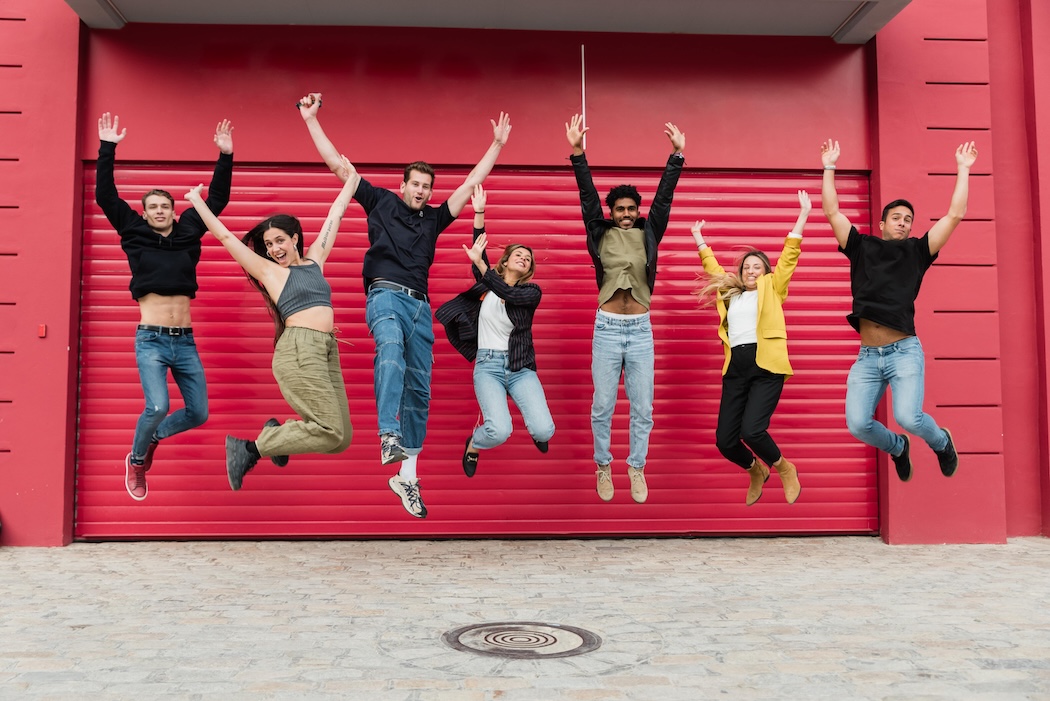Employee recognition is one of the most powerful motivators in the workplace. When done right, it boosts engagement, loyalty, and performance. But when done wrong—especially if it fosters comparison or rivalry—it can lead to toxic competition, burnout, and resentment.
So how do you walk that fine line? How do you celebrate performance in a way that lifts everyone up rather than pitting people against one another?
That’s what we’ll explore in this article: when and how to recognize performance without breeding unhealthy competition—so your team stays motivated, collaborative, and happy.
Why Recognition Is Essential—but Needs Balance
Recognition has a proven impact on performance and retention. According to a Gallup and Workhuman study, employees who feel regularly recognized are five times more likely to feel connected to company culture and four times more likely to be engaged. Yet, nearly 81% of employees say they don’t feel recognized enough for their contributions.
Recognition isn’t just a nice-to-have—it’s essential for driving productivity and morale. However, traditional “employee of the month” programs or leaderboard systems can backfire.
When recognition only highlights top performers, others may feel overlooked or undervalued. Over time, this can create a sense of rivalry rather than unity, leading to disengagement and even turnover. In fact, SHRM research shows that unhealthy competition can increase workplace stress levels by 40% and reduce collaboration by 27%.
Clearly, recognition needs to be done thoughtfully—to celebrate excellence without alienating others.
Understanding Healthy vs. Unhealthy Competition
Competition isn’t always bad. In fact, a little friendly rivalry can inspire people to grow, innovate, and challenge themselves. But the line between healthy and unhealthy competition is thin.
Healthy competition:
- Encourages self-improvement.
- Inspires teamwork and learning from others.
- Rewards effort and progress, not just end results.
Unhealthy competition:
- Fuels jealousy, comparison, or insecurity.
- Leads to burnout and toxic behavior.
- Makes recognition feel exclusive rather than inclusive.
Your goal should be to create a culture of collective growth, where recognition fuels motivation without breeding division.
When to Recognize Performance
Timing is everything in recognition. Recognizing performance too rarely makes employees feel unseen—but overdoing it, or doing it inconsistently, can feel insincere. Here’s when to give recognition that actually matters:
1. When Effort Is Consistent, Not Just Outcomes
Don’t just wait until a project is finished to give praise. Recognize consistent effort, persistence, and problem-solving along the way. This approach values the process, not just the result, and helps employees feel appreciated even when they’re still in progress.
Example:
“I’ve noticed how dedicated you’ve been in testing this new system—it’s made a huge difference in catching issues early. Thank you for staying committed.”
2. When Collaboration Leads to Success
Recognize team-based achievements, not just individual stars. When a group achieves something significant, highlight each person’s unique contribution. This reinforces teamwork over competition.
Example:
“The way the design and marketing teams collaborated on this campaign was fantastic—your combined creativity really paid off.”
3. When Innovation or Risk-Taking Happens
Reward employees who take smart risks, share ideas, or challenge the status quo—even if the outcome isn’t perfect. This fosters a growth mindset and psychological safety.
Example:
“I appreciate you suggesting a new approach during our strategy session. That kind of fresh thinking helps us evolve.”
4. When Core Values Are Demonstrated
Recognition tied to company values helps maintain cultural alignment. If someone embodies collaboration, customer focus, or integrity—acknowledge it. It reminds everyone that performance isn’t just about numbers, but behaviors that drive long-term success.
Example:
“You handled that client issue with empathy and patience—that’s a great example of our customer-first value in action.”
5. When Milestones Are Reached
Recognize both personal and professional milestones. Whether it’s a work anniversary, completing training, or leading a project, these moments deserve celebration. It reinforces belonging and long-term commitment.
Example:
“Congratulations on your 3-year anniversary with us! Your dedication has made such an impact on the team.”
How to Recognize Without Fueling Rivalry
Now that you know when to recognize performance, let’s talk about how to do it in a way that encourages harmony and motivation—not competition.
1. Be Specific and Sincere
Vague praise (“great job!”) often feels empty and can leave others wondering why someone was recognized. Instead, be specific: what did they do, and why did it matter?
Example:
“Your detailed feedback on the proposal helped us refine our pitch and win the client. Your eye for detail really made the difference.”
This level of clarity helps others see recognition as fair and based on observable behavior—not favoritism.
2. Recognize a Variety of Strengths
If you only praise high-visibility achievements, quieter contributors will feel invisible. Balance recognition by highlighting different strengths—collaboration, creativity, consistency, empathy, or innovation.
Example:
“I want to appreciate how you’ve been mentoring new team members—it’s making onboarding smoother for everyone.”
Diverse recognition reinforces that there are many ways to succeed, not just one.
3. Promote Team Recognition, Not Just Individual
Encourage employees to celebrate one another’s efforts. Peer-to-peer recognition reduces hierarchy-driven competition and builds mutual respect.
Platforms like Karma make this easy by enabling teams to send quick, public shoutouts within Slack or Microsoft Teams—creating a culture where everyone participates in appreciation.
4. Focus on Growth, Not Just Winning
Avoid framing recognition as a contest (“Top performer of the month!”). Instead, focus on progress and development. Recognize people for improving skills, embracing feedback, or contributing ideas.
Example:
“I’ve seen how much your presentation skills have grown over the past quarter—your confidence in the last meeting was impressive.”
This approach celebrates personal growth without comparing employees against one another.
5. Make Recognition Inclusive and Transparent
Transparency prevents suspicion or favoritism. Ensure everyone understands how recognition decisions are made—whether through peer nominations, manager reviews, or data-driven performance metrics.
Also, ensure recognition is accessible to everyone. Remote workers, part-timers, and support roles should all feel equally visible.
6. Encourage Self-Recognition and Reflection
Invite employees to share what they’re proud of during check-ins or team meetings. This empowers individuals to own their progress without waiting for validation—and normalizes self-acknowledgment.
Example:
“What’s one accomplishment this week you’re proud of?”
Self-recognition fosters confidence and reduces the need for external competition.
7. Balance Public and Private Recognition
Public recognition can be powerful, but not everyone enjoys the spotlight. For introverts or those who value privacy, a one-on-one message or personalized note may mean more.
Knowing how each team member prefers recognition helps you avoid discomfort while maintaining authenticity.
Creating a Culture of Shared Success
Ultimately, recognition should feel like a collective celebration, not a scoreboard. Leaders can set this tone by consistently modeling gratitude, celebrating both team and individual achievements, and reinforcing collaboration over comparison.
When everyone feels valued, they naturally want to lift others up too. In fact, Workhuman’s 2024 Human Workplace Index found that companies with strong recognition cultures experience 73% higher engagement and 56% lower turnover.
That’s the power of recognition done right—it builds connection, not competition.
The Role of Technology: How Karma Helps
Tools like Karma recognition simplify the process of giving meaningful, fair, and balanced recognition. By integrating with Slack or Microsoft Teams, Karma lets employees give real-time kudos tied to company values—helping teams build appreciation into their daily routines.
Even better, Karma tracks recognition trends, helping HR and leaders identify who’s being recognized, for what, and how often—ensuring praise is distributed equitably and transparently.
With the right platform, recognition becomes less about rivalry and more about culture.
Final Thoughts
Recognizing performance doesn’t have to mean creating competition. When done with intention, fairness, and empathy, it can unite your team, drive engagement, and build a sense of shared purpose.
The key lies in celebrating growth, effort, and collaboration—not just results.
Recognition is most powerful when it reminds employees that they’re part of something bigger, where everyone’s contribution matters and success is a team achievement.
So go ahead—recognize your people often, sincerely, and inclusively. Because the best workplaces don’t compete internally—they rise together.


 The Most Effective Recognition Messages for Performance-Based Wins
The Most Effective Recognition Messages for Performance-Based Wins